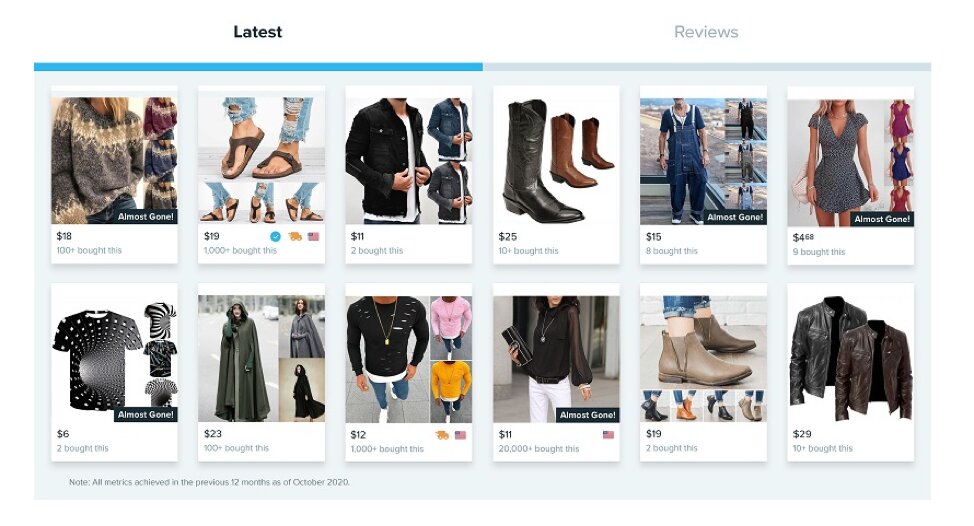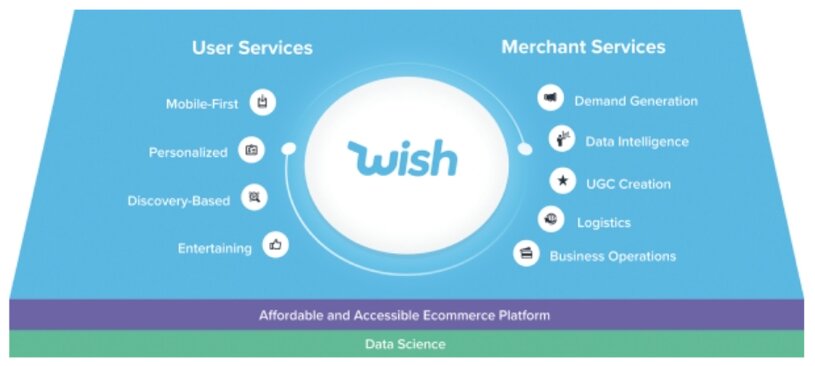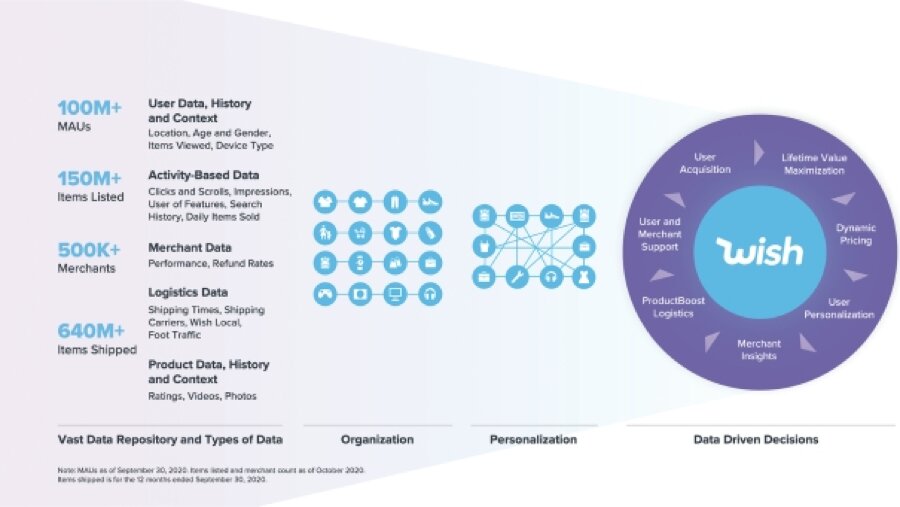Last year, Wish raised $300 million at an $11 billion valuation from a financing round led by General Atlantic, a growth equity firm.
Wish is currently trading at $20.09 per share, 16% below its IPO price, with a market capitalization of $12 billion and an EV/Revenue of 6.6x based on last year’s annual revenue.
Wish
 Wish operates an eCommerce platform through a mobile shopping app that was launched in 2010 by former Google engineer Peter Szulczewski. Wish’s shopping app was the most downloaded global shopping app in the past three years according to Sensor Tower.
Wish operates an eCommerce platform through a mobile shopping app that was launched in 2010 by former Google engineer Peter Szulczewski. Wish’s shopping app was the most downloaded global shopping app in the past three years according to Sensor Tower.
Wish connects over 100 million monthly active users from 100 countries with more than 500,000 merchants on its platform. This past year, merchants shipped more than 640 million items through Wish’s platform.
The shopping app was developed to appeal to value-conscious consumers with the majority of Wish’s merchants currently based in China. Wish focused on partnering with merchants in China due to their strength in providing products at competitive prices.
According to Facts & Factors, the global cross-border B2C eCommerce market was estimated at $780 billion last year and is expected to reach $4.8 trillion by 2026, growing at a CAGR of 27%.
FIGURE 1: Wish Shopping App

The shopping app provides users with a personalized discovery-based shopping experience rather than a search-bar based shopping experience. Over 70% of the sales on Wish’s platform do not involve a search query and instead, come from personalized browsing.
Wish enhances user experiences by utilizing highly-personalized feeds through gamified, interactive, and social features that increase the length and frequency of browsing sessions by users.
FIGURE 2: Wish Ecommerce Platform

Data Science for Merchants
Data science is leveraged by Wish to enable personalized shopping experiences for each user with a focus on maximizing return on marketing investment and user conversion.
Wish utilizes data science for key features including:
- User Acquisition
- Lifetime Value Maximization
- Dynamic Pricing
- User Personalization
- User-Generated Content
- Merchant Insights
- Advertising
- Logistics
- User and Merchant Support
FIGURE 3: Wish Data Science Model

As more users join the eCommerce platform, Wish can accumulate more data across user and merchant activities, allowing for continuous improvements on the user experience.
Financials
Wish generates the majority of its revenue from fees driven by transactions between users and merchants on its app, which accounts for 78% of its total revenue. In addition, Wish receives revenue from its native advertising tool, ProductBoost, and logistic services.
For the nine months ended September 30, 2020, Wish reported revenue of $1.7 billion, a 32% increase from the same period last year, and a net loss of $176 million compared with a net loss of $5 million last year.
In 2019, Wish had revenue of $1.9 billion, a 10% increase year-over-year, and a net loss of $129 million compared with a net loss of $208 million in the prior year.
Although Wish has impressive revenue growth, the shopping app continues to report large losses due to high sales-and-marketing expenses, including sponsoring a jersey patch, on the NBA’s LA Lakers’ uniform.
Ecommerce Market
The pandemic stimulated online shopping as consumers refrained from going to brick-and-mortar stores while staying at home due to lock-down orders.
As demand rises for online shopping, it will be interesting to see if Wish’s unique experience-focused shopping app can compete against eCommerce leaders such as Amazon (NASDAQ:AMZN).




